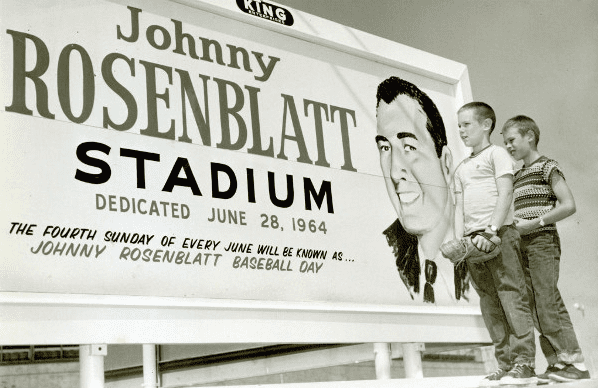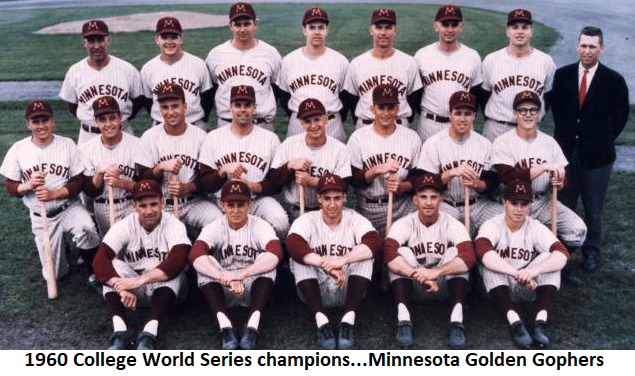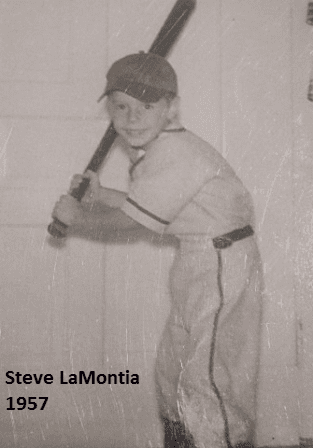Remembrances of a Ten-Year-Old College World Series Employee

By Steve LaMontia, Director of Communications
Here we are in the midst of another exciting College World Series, an event that began in 1947 in Kalamazoo, Michigan. The CWS moved to Omaha in 1950, after a brief stop in Wichita, Kansas after Michigan. I was born in an Omaha hospital the same year it moved to Omaha and feel the tie that binds. It has been a part of my life, physically and mentally, ever since.

At my advanced age, I now get nostalgic even watching reruns of Hazel but I thought it might interest you to read about one of the years I worked at Rosenblatt Stadium, formerly Municipal Stadium until 1964, something I did every summer. Rosenblatt was located on thirteenth street, I lived only two blocks away, and went to school across the street from the stadium. Many days were spent daydreaming while looking at the floodlights through the red brick building windows. I also spent many nights running home as fast as I could after working a night game, as I just knew someone was waiting in the bushes to scare this ten-year-old baseball junkie.
At the 1960 CWS, I was working behind the door directly under the net that caught all the foul balls behind home plate. It was the coolest job in the whole place, and I did them all. The organist would go up and down the scale, as the ball rolled up and then back down, hit the large seam at the bottom, and then bounced in the air right into my waiting hands. If I missed the ball the fans would boo me. It was great. I was also in charge of the baseballs, as I sat next to boxes of balls to run out to the umpire. What kid my age wouldn’t eat that up?

In 1960 they hosted Arizona, Boston College, Minnesota (eventual winner), North Carolina, Oklahoma State, Southern California, St. Johns, and to my surprise Colorado State based in Fort Collins, which lies only a few miles from where I am typing this. They don’t even have a baseball team anymore.
In 1960 they also had pop machines in the dugouts and I had to keep them filled. No, the sodas were free. At other games I would have to run all through the stadium chasing down foul balls. I had to get them back from people if they beat me to them. Times were a little tougher back then!

I would also be called on to climb up the scary ladder into the scoreboard in left field to drop the numbers into the inning. There wasn’t a phone up there and you walked on planks and had to be careful, as you could see the potential danger below. ‘Live without a net!’ The balls and strikes were lights operated by the press box (yet another job) but you had to REALLY pay attention to the game from the scoreboard. More than once an umpire stopped a game to signal that we missed a run. It was a one-person job and only one person was up there so there wasn’t any help. And boy was it hot in that steel shed! It was like sitting in a metal silo on a hot, humid August day.
I worked all summer at Rosenblatt for little league games, American Legion, and everything else they could fit in there. But when Omaha became a AAA affiliate for the St. Louis Cardinals and then the Dodgers, I was reduced to more localized activities when they were out of town. Real employees took our jobs for the big boys.
One interesting tidbit is that television coverage was non-existent, except for the finals on ABC’s Wide World of Sports. Games were played all morning and afternoon with a few hundred people in the stands if that. The occasional night game drew more but the popularity was nowhere near today’s 30,000 per-game attendance. I can still hear the clang and bang of foul balls ricocheting and echoing in the stands as I chased them down. I can also still see the teams sitting in the left-field bleachers while waiting for their game to start. There wasn’t anyone around them and they just laid out on the bleachers snoozing.

Probably the coolest benefit was that we could go out there and take batting practice and infield before they prepped the field. You can’t put a price tag on being a kid and playing on a stadium field. Life was great in 1960!
Anyone reading this who is under the age of 60 is probably asking ‘what’s the big deal?’ Well, the College World Series has changed quite a bit but the game you see now in 2021 with coverage of every game, every day didn’t exist. My job there continued until my mid-teens when life took over. But those memories from a beautiful era of innocent baseball will never fade.
By the way, what did I get paid for covering two or three games per day? Two baseballs. I would have done it for nothing. I was thrilled to get that and carefully placed them in my suitcase at home that housed all of the home runs balls I chased down the hill outside the left-field fence for over a decade. I was always the kid who supplied the balls when we went down to the corner park to play.
As I look at the bucket of baseballs sitting nearby, I see that not much has really changed in my life.

